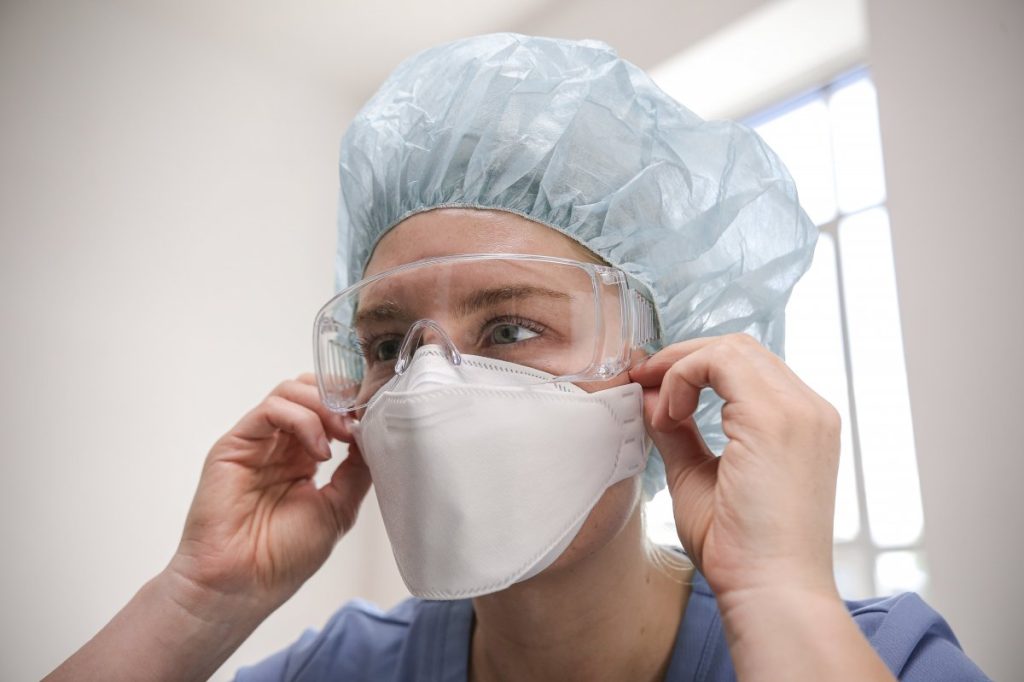In many industries, face masks have played a significant role for many years! Surgeons wear them in surgeries. Scientists wear them in cleanrooms. Construction workers wear them on the job. And many more!
But which face mask is best for which job?
Some offer filtration from very small particles (viruses and bacteria), while others only offer protection from large droplets. Depending on your purpose for wearing a mask, one option will work better than others. Each one serves a different purpose, but each one is important!
N95 Masks
We commonly call them N95 masks, but they are really N95 filters in a mask that can be fitted to your face. The fit is crucial because it stops particles from sneaking in around the edges.
N95’s are commonly considered to be one of the best filters for face masks. They are known for filtering out viruses and bacteria, and filter out at least 95% of particles 0.3 microns and larger. They are regulated by the CDC, NIOSH, and OSHA.
N95 filters and masks are commonly found in hospitals and on construction sites.
Surgical Masks
Surgical masks are single-use paper masks designed to protect your face from large splashes, sprays, and droplets. They can also help you keep your droplets to yourself. They are made in different thicknesses, depending on their intended use.
Because they do not seal to your face like an N95, they will not protect you from all particles in the air.
As the name implies, they are often used by surgeons. You can also find them being worn by dentists and other members of the medical field who want to keep their droplets to themselves when working with a patient. They are sometimes paired with a face shield.
Dust Masks
Dust masks are commonly used in construction, where people are exposed to a lot of – you guessed it – dust. They are not NIOSH approved, like N95 filters and masks, but they typically do seal to your nose. They do not protect from hazardous gases or vapors.
They are typically paper and used mainly for comfort and overall health. When working in an environment where irritants are produced (construction, gardening, etc.), these masks help the wearer feel comfortable breathing.
Air Supplied Respirators
The idea behind air-supplied respirators is that they supply clean air from outside the working area. There are three different types: supplied-air respirators (SARs), self-contained breathing apparatus (SCBAs), and combination SARs/SCBAs. They are regulated by NIOSH.
They use hoses to bring clean air into a sealed mask. Unless the user is carrying the oxygen with them, the person may be contained to the length of the hose. They can be used with a sealed face mask, hood, and helmet.
Air supplied respirators are used when cleaning the air is not realistic, such as when dealing with toxic gas and vapors. In some cases, they could be used if there’s not enough oxygen.
Cloth Masks
Cloth masks are considered reusable. Depending on the use and design, they come in different thicknesses and designs. Typically, they are hooked around the ears and cover the nose and mouth.
There are a couple of uses for cloth masks. We typically think of them as a guard to keep our droplets to ourselves in today’s world.
But they have been worn for many years in Asia to protect against air pollution. Since cloth is fairly porous, it does not offer much filtration. They are considered marginally beneficial for protecting the user against particles smaller than 2.5 particles. But it can block the larger particles.
Face Shields
Face shields are not face masks, but are usually paired with a mask – such as a cloth mask or surgical mask – to prevent the spread of droplets. Because of the large gaps around the size, they are not considered to offer any kind of filtration to the wearer. Combined with a mask, they might offer some protection to others from the wearer’s droplets.
Studies s how they can protect healthcare workers from large particles, but not smaller ones.
When needing to protect others, face shields are typically used for accessibility purposes. When the wearer would otherwise wear a mask that would cover their mouth, wearing a face shield allows people who are deaf or hard of hearing to read their lips.
There is not one specific industry that uses face shields more than others at the moment.
What Do You Need To Know About Healthy Air?
Masks can protect your lungs and health – and they’re more important today than ever. We know how critical they are, which is why we’ve dedicated our efforts to developing a new N95 mask.
We are in the business of monitoring some of the cleanest environments in the world. With our acquired knowledge, we have decided to use our expertise to develop and manufacture personal protective equipment. This has led to the creation of the world’s most innovative N95 Disposable Respirator. The H210 is designed to fit any face while filtering more than 95% of particles using its multiple layers.
As the world’s clean air monitoring experts, we are dedicated to clean air everywhere – including using the H210 N95 respirator.


